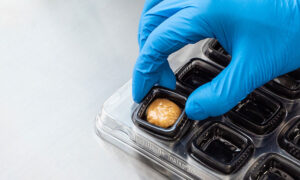
High-quality products and excellent precision are not only the benefits of precision measuring tools. There are many more. Besides, maintaining high-quality services depends mostly on choosing the appropriate tools. We may see the diverse employment of precision tool types for instance, in the US and Europe’s medical, automotive, aerospace, and defense industries.
These measuring devices are often used in laboratories both at high schools and colleges, to achieve great precision and accuracy. In this article, you will learn about the typical types of precision measuring tools used in the industry for inside, outside, and linear measurement.
Types of Precision Measuring Tools at a Glance!
The most precise measurements can be frequently achieved using precision tools. It can measure up to 0.000050 inches, precisely. The items listed below are some of the tools that are most required.
Slide Calipers
Slide calipers offer a vast range of measurements, which has a precision of up to 0.001. These instruments commonly measure the depth, step, interior, and outside dimensions. They contain fully functional electrical tools along with IP67 output protection. These instruments can be equipped with digital readout tools, longer jaws, and specially constructed slides.
Precision Gauges
In sectors ranging from trains to medicine, gauges are useful when measuring water or air. Meanwhile, measurement accuracy and precision are the guiding criteria for gauge operation. They are used to assess sensitivity, linearity, and pressure, in addition to physical properties. Needle gauges, water gauges, dial gauges, air core gauges, stream gauges, and many more are among the various gauge kinds.
Indicators
Users can measure movement on a small scale using indicators. Both analog and digital indicators are designed to deliver precise, comprehensible measurements. For specialized equipment, they monitor rotational movement with precision ranging from 0.001 inches to 0.00005 inches. Some varieties are:
- Test indicators
- Back plunger indicators
- Electronic indicators
Micrometer
Micrometers are made to the highest standards and come in a range of models, including outside, inside, depth, bench, and heads. Different sizes and accessories for measurement readouts are available, including electronic, digital, and classic vernier options. Technicians take measurements on a small scale with extreme accuracy by micrometers.
Pneumatic Instruments
Through openings or tubes, these instruments measure air pressure and air volume. They serve as quick calibrations. They range from fabrication tools to riveters, saws, fastening tools, and drivers. Air nut riveters, Pneumatic screwdrivers, and impact wrenches are a few examples.
Data Collection Systems
Data collection is becoming a more crucial component of manufacturing. It is one of the key forces for the transition to electronic measuring instruments with output. Wireless data collecting refers to a cutting-edge system for the real-time gathering, recording, and transfer of measured data. It streamlines the data collection process from measurement to entry, saves time, and can eliminate mistakes.
Summing Up
The above is a short list of commonly used precision measuring tools. Manufacturers tolerate high standards and quality with the aid of precision tools. Besides, indirect measurements can also be made using it by doing computations on actual things in a way that yields exact results.



